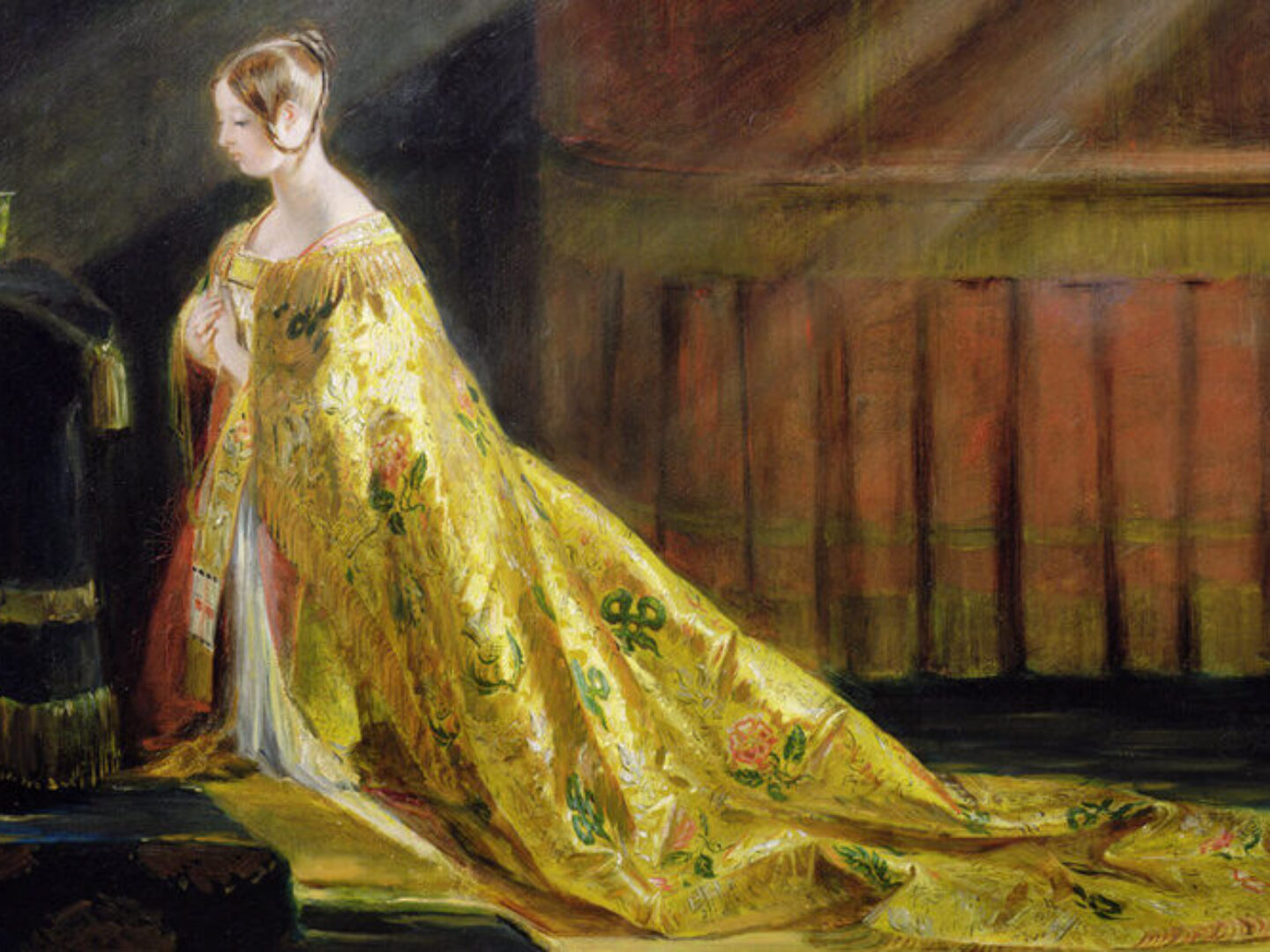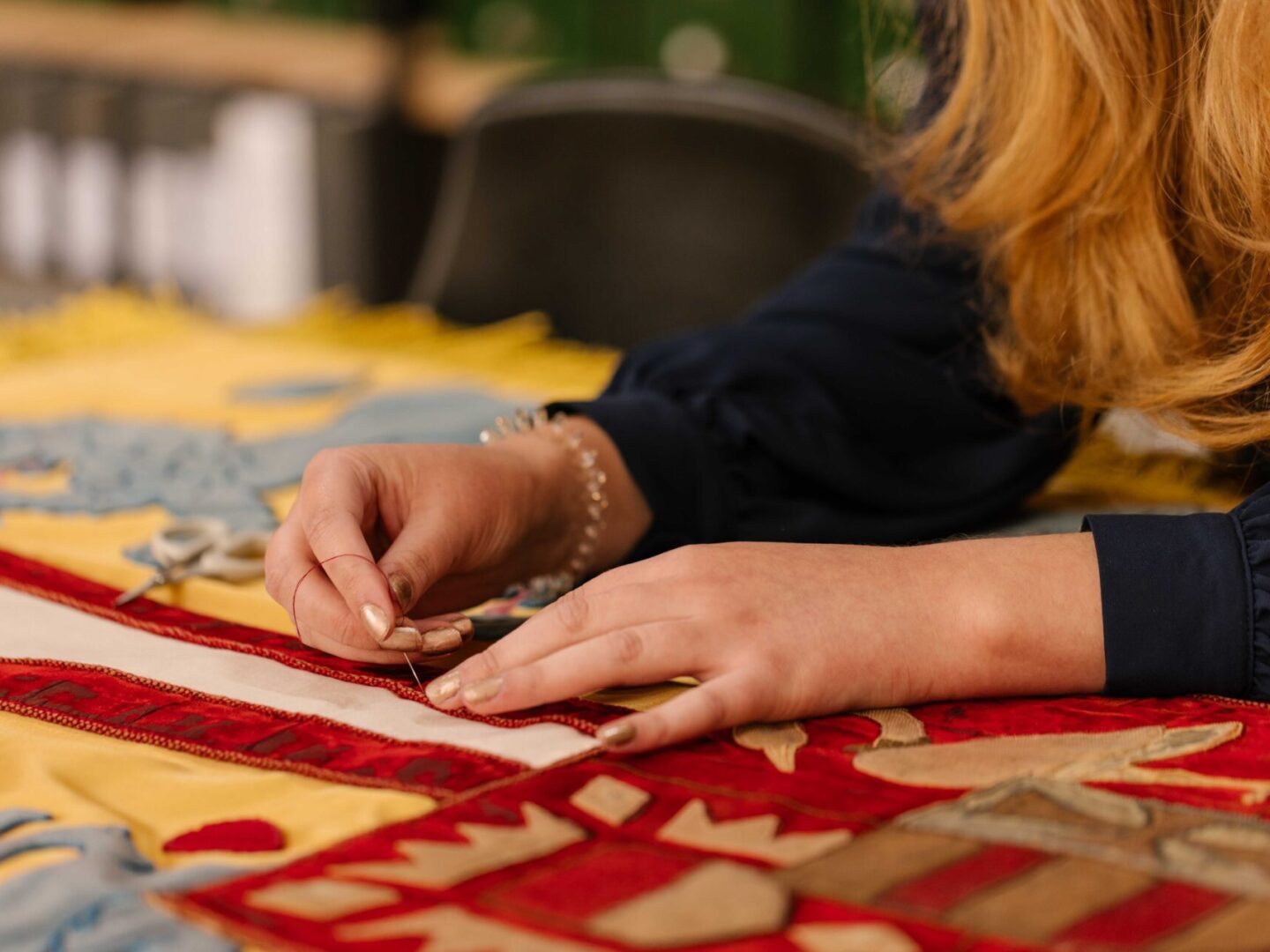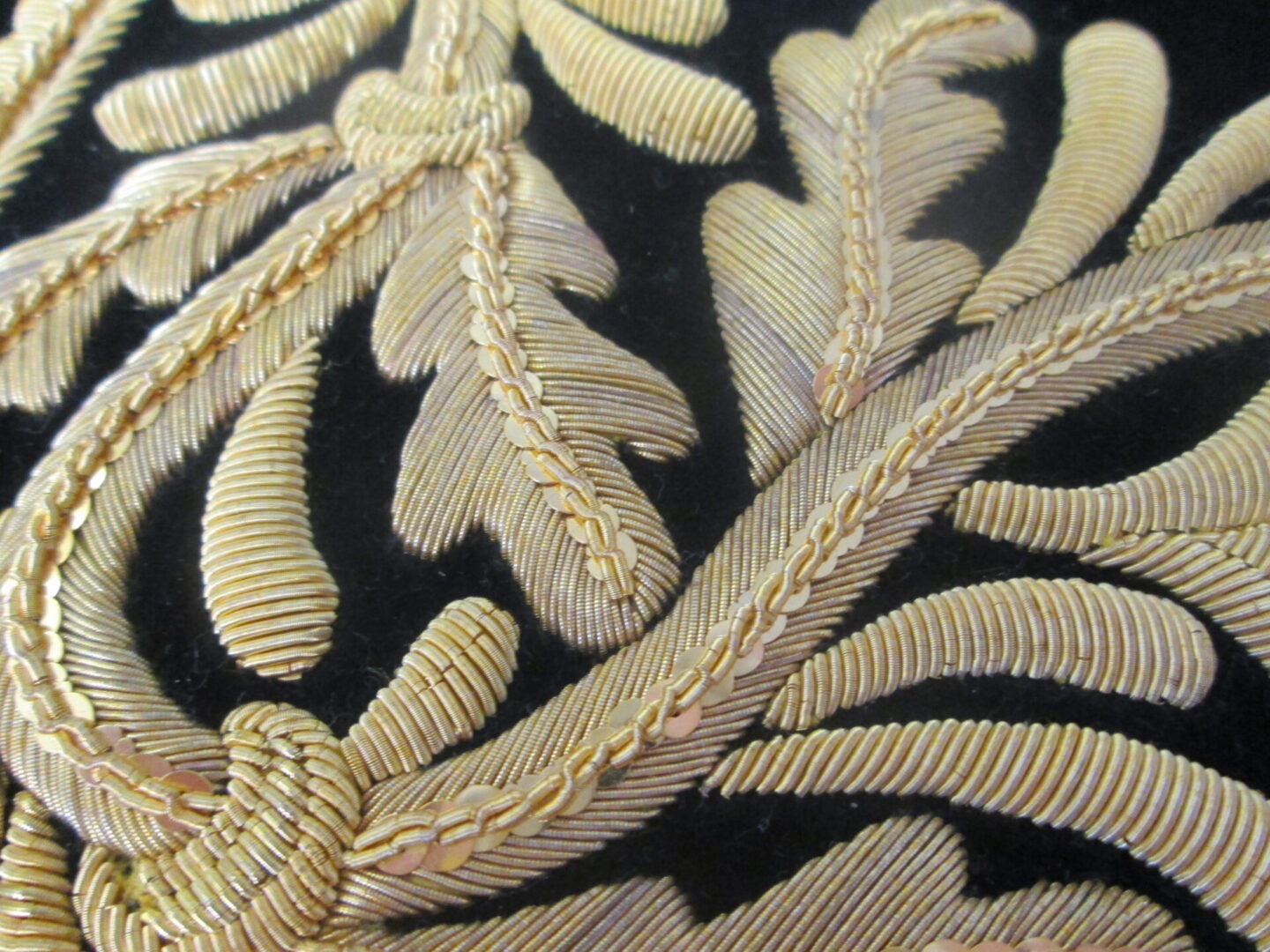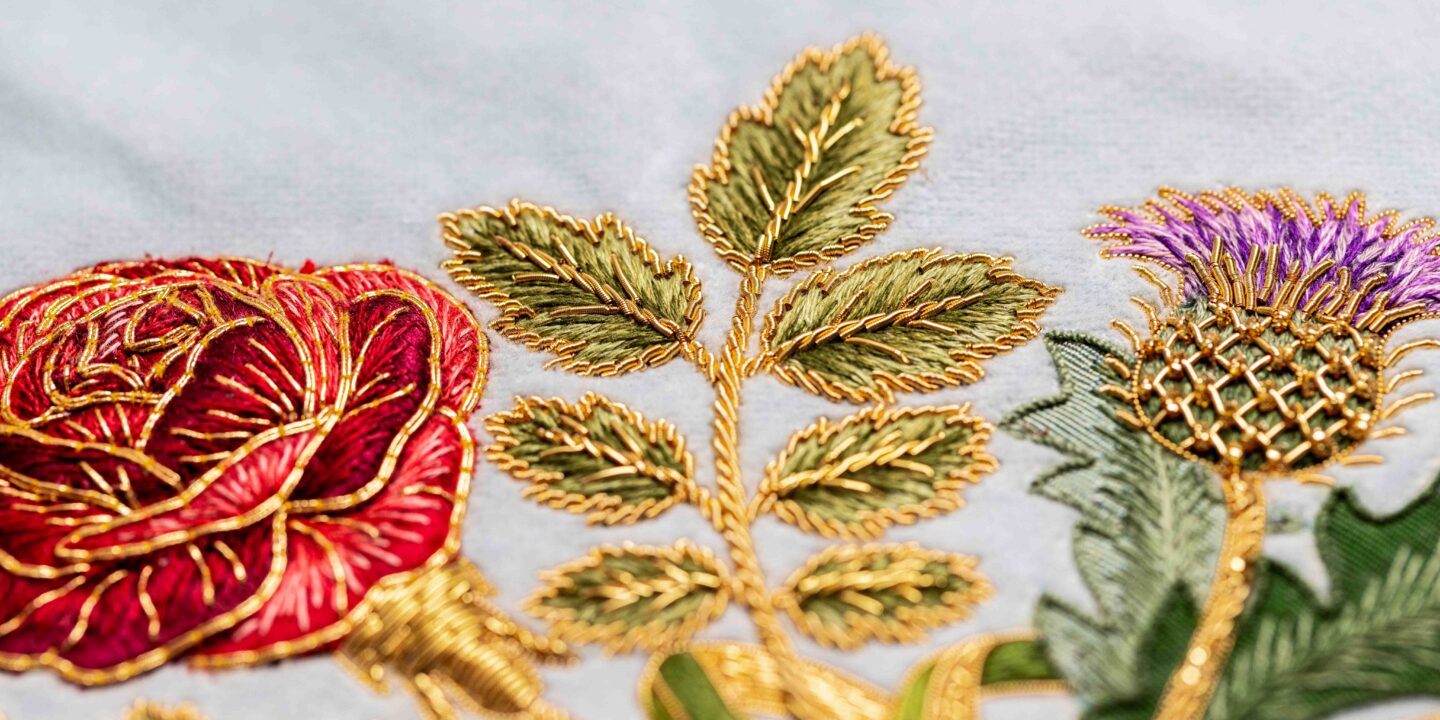

The coronation of a new British Monarch is a ritualistic, symbolic and ceremonial event that is widely considered the pinnacle of pomp and circumstance.
The city of London and the historic Westminster Abbey serve as the grand backdrop to an ancient practice brimming with small, meaningful acts. For centuries the world has only been able to appreciate the vast spectacle, missing many of these finer details.
In 2023, for the coronation of His Royal Highness, King Charles III we have a rare opportunity to see everything. From the spectacular horse-drawn Gold State Coach accompanied by the Yeomen of the Guard to the fine embroidery on the Imperial Robe, we will see it all.
This article will highlight some of the main things viewers should look out for, with an emphasis on all the luscious embroidery likely to be on display.
King Charles is expected to enter Westminster Abbey at 11 am on the 6th of May. Upon entering the Abbey he is likely to be wearing a crimson surcoat and a familiar Parliament Robe (or Robe of State) which is the same article worn at State openings of Parliament.
The crimson coronation surcoat is a short velvet cloak with a high collar. It is typically embroidered in goldwork with national symbols such as the oak leaf wreath. The left shoulder will likely be embroidered with a large silver Garter Star. It’s worth noting in 1953, that the surcoat was omitted in favour of the embroidered gown worn by the late Queen, it remains uncertain whether King Charles will bring this article back.
If he chooses to wear it, the surcoat will likely be partially obscured under the Parliament Robe which features handmade delicate gold lace trim and ermine from Canada.
If worn by King Charles, these two vestments are considered to be earthly symbols of status and must be ‘divested’ from the monarch before the anointing stage of the ritual. For the next portion of the ritual, King Charles will then change into an austere and simple white Colobium Sindonis (or Shroud Tunic) for the anointing ceremony. This plain vestment symbolises purity and the shedding of vanity to stand before God.
King Charles will then be seated on the Mediaeval Coronation chair over the Stone of Scone. The Archbishop of Canterbury will then proceed to anoint the King with consecrated oil from Jerusalem. In 1953, the coronation committee decreed this portion must remain out of sight (enclosed in a golden canopy) and the same rule is likely to remain in place in 2023.
After the anointing, the King will be enrobed in a Supertunica, the Pallium Regale and a Stole for the Investiture.


This 6.5 metre-long purple velvet robe echoes the imperial aesthetic of ancient Rome. Weighing close to seven kilograms, the robe is trimmed with Canadian ermine and features a repeating goldwork motif of ears of wheat, symbolising peace and plenty


A Supertunica is inspired by the robes of Byzantine emperors. It is a long gold coat that fastens at the waist with a sword belt, has wide sleeves and descends to the wearer’s ankles. When one was worn by Elizabeth II, it concealed most of her white dress and made her appear almost entirely made of gold. A new design may be made for King Charles to ensure the perfect fit.
The Pallium Regale or Royal robe is worn over the Supertunica. This ornate golden robe is not usually remade for each monarch. A version made for George IV in 1821 is likely to be used for the coronation of King Charles. This Pallium Regale is replete with embroidered symbols of the nation and the royal family such as eagles, roses, foliage, crowns, fleurs-de-lis, thistles and shamrocks all embroidered in coloured threads. Interestingly, unlike the Supertunica and the Mantle, The Pallium doesn’t have an equivalent in the vestments worn by the Church. It is considered a lay garment.
To complete the symbolic dress for the investiture a decorated Stole will hang around the neck of the King. In 1953 the Stole was made especially, and incorporated plant and flower emblems from across the Commonwealth. Heavily embroidered with gold and silver thread, a stole is typically set with jewels and features fine gold fringing. King Charles may have a new Stole made to include the multi-faith nation he reigns over.
When fully dressed in cloth of gold and fine goldwork embroidery, the Archbishop of Canterbury will crown King Charles with the St Edward’s Crown. This will coincide with a 62-gun salute fired from the Tower of London, trumpets sounding across Westminster and cries of God Save the King.
After the crowning and the fanfare, the newly crowned King Charles will wear the Imperial Robe for the final procession. This 6.5 metre-long purple velvet robe echoes the imperial aesthetic of ancient Rome. Weighing close to seven kilograms, the robe is trimmed with Canadian ermine and features a repeating goldwork motif of ears of wheat, symbolising peace and plenty. Given the ornate goldwork took 3,500 hours by 12 skilled Royal School of Needlework embroiders in 1953, it is widely assumed King Charles will wear the same Imperial robe as his mother did for her coronation.
In 1953, Queen Elizabeth decreed that her husband would be a Prince Consort rather than a reigning King. As such we didn’t have the opportunity to see how the ceremony for a King and Queen would unfold.
In 2023, with Queen Camilla at King Charles’ side, we will have an opportunity to see aspects of the coronation ritual that haven’t been seen since George VI and Elizabeth in 1937.
It is expected that Queen Camilla will have a similar shorter coronation ritual of her own that will follow immediately after the Kings. If so, that will mean similar garments, and jewellery will have had to have been selected or made especially.
After both ceremonies, it will be time for the final procession. King Charles will exchange the St Edward’s Crown for the Imperial State Crown and then walk the length of Westminster Abbey back to the Golden State Coach.
The winding journey through the streets of London back to Buckingham Palace will mark only the third occasion when a coronation has been designed to be a symbolic ceremonial act and a public spectacle.
More than 300 million people are expected to come together to watch the coronation making it one of the biggest Royal spectacles of the 21st Century.

